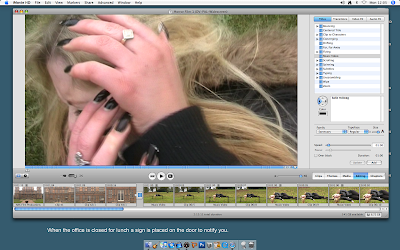During the planning stages, our main goal was producing a plan that outlined our initial idea. My area in which I mainly covered was the recee location sheets. I went to various locations that had a spooky look to them and photographed them, in order to a final location for the film. I also contributed ideas that could help the mise en scene in the film like designing symbols that we could hang up in our film. Research was also very important, and watched various horror films parallel to the genre of our film to get an idea of what we should have been including in our film.
In my point of view, the most challenging part of the coursework was the production. I concentrated on getting the mise en scene right in the shots and also filmed as well. We all filmed, and of the scene I filmed, I tried to keep the camera steady and put it in the best position for the best shot. I filmed the end scene where our actress is attacked. My other big focus during the production stage was the soundtrack. I used GarageBand in order to create the soundtrack for the film. I enjoyed using the software and experimenting with different sounds to produce a final track. I am quite pleased that I was able to create a soundtrack for a film and that it is parallel to the actual film.
In the final post production stages, we all updated the blog and I added some final print screens to it to show our progress. Then I evaluated our progress over the course and put my opinions down about what I thought we had achieved. To conclude I thoroughly enjoyed working with Katie and Natalie and thought the course was a great experience.

























